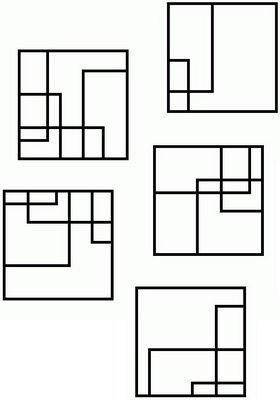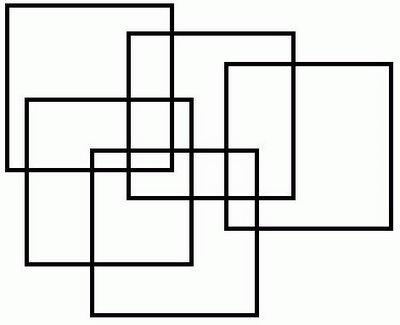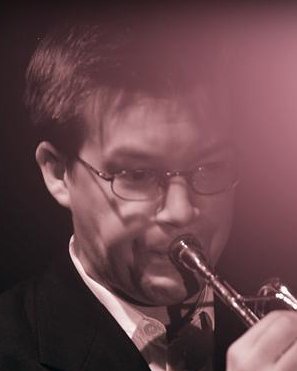Mnemonics can be defined as "a technique of
improving the efficiency of the
memory". It sometimes means "a system to develop or improve the
memory",
implying a specific set of routines to achieve this
improvement, but the first and wider definition is the one used
here.
The goal of this article is to briefly describe what mnemonic
techniques are and a few ideas regarding how they might be used
when playing chess blindfolded. The research has consisted of
articles and e-mail exchanges with the very competent blindfold
player Hindemburg Melao Jr.
Footnotes are used exclusively to indicate sources or
cross-references; a chess player is referred to as "he". Thanks
to Andreas Gunnarsson, Eliot Hearst and Hindemburg Melao Jr.
What is mnemonics?
The memory processes
Memory if often divided into four major processes, and I will use
these categories to help explain my view of what mnemonics are.
Attention and selection — what you
notice; you choose (consciously and/or unconsciously) what to
focus on.
Encoding — what you have chosen to
focus on is changed, encoded, into the things to be
remembered.
Storage — how you hold on to the
information; some memories fade faster, others slower.
Retrieval — recalling what you have
previously stored.
Some mnemonic guidelines you know from your common sense. For
example: with regards to attention you need to focus. When it
comes to encoding you need to keep it as simple as possible. What
is the most effective way of storing (visually, audially,
kinesthetically, etc.) differs somewhat between persons. The
variant you use spontaneously is probably a good clue. Retrieval
depends not only on how well the memory is stored, but also on
what you have to do to remind yourself of it (for example,
sometimes you forget why you walked into the kitchen, but you
know that you can do the walk over again and it will probably
come back to you).
Mnemonics builds on this and lets you be more efficient in how
you use your memory. It is basically just a continuation of the
common sense, taken to a level many people do not bother with
because they normally do not need it in their everyday life. It
is all built on principles natural to us, simply because these
are the ones we do best.
The role of mnemonics in the different memory processes
To improve the attention and
selection process you can practice concentration, both
intensity and stamina (some form of meditation is often used to
achieve this).
In this process we also include everything that has to
do with creating an environment suitable for concentration. This
includes external factors such as avoiding any disturbances and
being given new information in a way that is clear and that you
are comfortable with. It also includes internal factors such as
being in good health, rested, relaxed and without any feeling of
(negative) stress or pressure. In this process is also something
seldom mentioned: the question of what you are supposed to pay
attention to. The reason this is so rarely included in any
mnemonic guides is of course that it is very subject
specific.
Just to be clear: mnemonics means the deliberate use of ways to
improve these factors. We can all concentrate more or less and
what we do without having to actually think about it is not
included in mnemonics. It is true that continuous use of mnemonic
techniques will incorporate these into your normal thinking.
However, when that happens, they are no longer mnemonics.
The encoding process is where you
find all the famous mnemonic tricks that make up so much of the
self-help literature on this
subject.
So how can we make this process as effective as
possible? We start by making the information we must remember as
simple and logical as possible.
By organizing the information we lessen the amount to be
remembered. We do this by distilling from our sources what we
actually have to remember, we look for patterns and we decide how
much of what we have left that actually has to be memorized. Not
all of the original information needs to be encoded, you just
need enough to remind you. Once you have found the memorized
cues, you can often take it from there and remember the rest. So
how do we encode what we have left?
Because we are different, the methods most effective to us differ
as well. But there are still some general principles that seem to
apply to practically everyone. One of those is that it is easier
to imagine something concrete. A concept or anything else
abstract is transferred into something concrete, which is
remembered (concrete means you are able to sense it; see it, hear
it, smell it...). In this and the other encoding situations
imagination plays a big part.
Another basic concept is that it is always easier to remember
something that has a clear connection to something you already
know. Association with something familiar gives you a specific
place to put the new stuff, a place where it is easy to find
later. In order to make the associations as rich and effectual as
possible, it helps to use all senses. Not just see an image but
think about what it sounds like or what it smells like, or
anything you might imagine. It is also good to attach some form
of emotion or mood (if that doesn't come by itself); an emotional
event is easier to remember than one you don't really care about.
A note about automatic encoding (also called "chunking"): In
practically all aspects of life we use what is called implicit
knowledge to automate tasks we perform regularly. For example,
you do not have to think about how to walk, how to talk or how to
read. It comes automatically. As mentioned above, this kind of
simplification of input is not included in the term mnemonics.
Storage itself is not subject to
mnemonic techniques, but the result of the other
processes.
The retrieval is, because it is the
decoding process, inevitably linked to the encoding process.
Whatever you have associated with the memorized information is
your key, so that is what you use in finding it again. If there
is still something you cannot remember, the only thing you can do
is search for it.
If you have something "on the tip of your tongue", that is if you
know you have the information but cannot access it, you can in a
limited way still look for cues. If it is a specific word, like a
name, you can look for it by trying to start the word with the
letters of the alphabet, one by one. Hopefully you will be
reminded while trying the correct letter.
This sort of retrieval help, which is really
just a form of systematic search, is only the last resort and not
very effective. When developing the mnemonic techniques, all the
work goes into the attention and selection and
encoding process (in other words the input
processes).
How can mnemonics be utilized in blindfold chess?
Remembering one board
Some parts of mnemonics are always present, no matter if you use
a specific system or not. They are the ones in the
attention/selection process. You have to be focused and you have
to pay attention to only the game. All the factors regarding
focus and concentration mentioned above apply.
In the encoding process the simplifying of information is always
there, mostly spontaneously. This is what has been called
"chunking" of information. This is necessary if you are to handle
all the information needed to play a chess game, but since it is
automatic, it is not included in mnemonics. (It is possible to
focus on this part of the process while playing, but that
counteracts itself since the goal is to have less to focus on,
not more.)
Chess players don't remember a position piece by piece, as a
non-chess player would be forced to. They see relationships
between squares, pieces, pawn structures, open files, and so on.
The better the player, the more efficient the chunking of the
information of what the board looks like, and the more elaborate
the associations of squares, pieces and piece configurations. For
someone who doesn't play much chess, playing blindfolded sounds
like an enormous mnemonic effort, but it is much simpler for
someone who has the tools for it. Being a good player means
having an efficient set of tools.
When it comes down to it, remembering the game, as in remembering
all the moves in their correct order, is not the same thing as
being able to "take in" more or less the entire board at once.
This kind of comprehension is required because it is the only
thing you have to go on to calculate your next move; just
remembering what piece moved where is not enough. If you have
enough knowledge and skill at playing the game with a board that
you can plan moves without it, then remembering what you did is
not a problem. It is then not much information to remember. This
means that playing blindfolded is not really a question of having
a good memory, is it about being able to comprehend the position
enough to be able to plan your next move. In a way all players
use this ability more or less even when they have a board in
front of them; while planning ahead, they envision pieces moving
and watch for what kind of position the moves lead to.
In blindfold playing, there is a skill
level below which the information gets too complicated for the
brain to process. Master blindfold player Reuben Fine (1914-93)
has written he believed that knight odds level is required to
play one game blindfolded, while master level is necessary to
play more than one game
.
As people differ in there working memory capacity, the
required level probably correlates with both size and
configuration of that capacity, as well as with ability to
concentrate. Examining this and getting more information about at
what level of chess skill blindfold playing is possible would
make interesting research but I have found no more information
than the above cited article.
There have been suggestions how to remember
chess games even if you are not a competent player. Dominic
O'Brian has suggested using a variant of the Journey
method.
He gives the different pieces personalities and the
Knight so becomes Sir Lancelot of the round table, the Queen is
Elisabeth II etc. Then algebraic notation itself is made able to
visualize. Each square is turned into initials by changing the
number into a letter, c3 becomes CC (represented in his example
by Charlie Chaplin) and f6 FS (Frank Sinatra). The different
images are then associated with each other and stationed along
the mnemonic itinerary. This way of memorizing results only in
recollection of moves in their correct order. It does not relay
any relationships between pieces, which means that no matter how
many games you remember, it will not improve your
playing.
We come to the conclusion that some general parts of mnemonics,
more specifically the ones you can benefit from in any type of
situation, help if you want to play blindfolded. More specific
tools, such as the systems found in many books, do not.
Remembering more than one board
Let us assume a person can play one blindfold game of chess. How
can he go about if he wants to play more than one game
simultaneously?
Playing more than one board could be seen as doing the exact same
thing as with a single board, but with the amount of information
to be remembered multiplied with the number of boards played. It
could also be seen as two different and separate activities,
playing (comprehending) one board and remembering the others.
In the first alternative the skill level required must be
significantly higher than when playing only one board. In the
second alternative, the player uses the same way of playing the
single board as he has done when playing only one game. The
factor added is to put the other board or boards aside and recall
it for the next move; that is, simply remembering something
enough to be able to recall it later. I say "simply" because this
process does not require this board to be available to plan moves
or strategies, it just has to be stored. The issue of being able
to use the board for planning moves is still only needed for one
board at a time. The other boards are stored, ready to be picked
up again and played, and this storing is the area of the type of
mnemonics featured in popular mnemonic systems (a number of which
are listed in the Appendix). In reality, however, you will not
find anyone using exclusively one of these two alternatives. They
represent only the extremes of a spectrum.
The more you use a mnemonic technique, the more automatic it
gets. You simply get better at doing it as you chunk the steps
involved better and better and eventually it gets fully
automated. A good example of an automated process is the way you
read. You probably do not have to think about what the letters or
even the words mean, as you were once forced to. But it is not as
simple as that, and rechunking happens many times during the
learning process. What is to be chunked changes as comprehension
of it improves, and comprehension improves when the new chunks
are organized. I will not try to explain these developments, but
I will look at where mnemonics can be applied.
When you recall something you start with one detail and that
detail reminds you of another, and then another, and soon you
have more or less the complete memory. And even if some detail is
missing you can probably find more than one path of association
to remind you of it once the others are in place. Accepting this
model of our memory we get two places where mnemonics can do
their thing: helping us find the first clue, the "key," and
helping associate the pieces of information so that the key will
lead to all the rest.
The associations between the information involved in a chess
position are always more or less spontaneous, since the moves
follow a specific plan and this binds them together. The best way
to help a player to improve is probably just to remind him of the
basic guidelines of mnemonic associations and let him do the
specifics (I say this because personally adapted mnemonics are
always the best, and I am careful not to try to improve on the
spontaneous by applying a general model). The guidelines,
described briefly in the first part of this article, are: use
your imagination, look for patterns, use all your senses,
associate with something familiar, use concrete images. All these
rules apply also when remembering the key bit of information, but
as this is a more straightforward memorizing, mnemonics can here
be given a larger and more elaborate role. For this, one can use
any of the systems described in a number of books on mnemonics
and memory.
Making the boards distinct
The most common problem described in simultaneous playing is that
of mixing up the boards. If you only play two boards then this
will not be a problem since you will be working on one of them at
any given point in time. But how do you keep the boards separated
when playing ten boards or more? By making them different.
A common technique is using different
openings to separate boards. When playing twelve games, the
blindfold player use one opening on four of the games, another
one the next four and play black on the last four (or some
similar system).
Some people think that the memory used by blindfold
players is built up by a memory bank of "normal" positions. This,
they conclude, would make the game easier to remember if it did
not include any unexpected strategy or odd moves. If they try
these in order to make the player forget the game easier, the
effect becomes the opposite: that game is immediately singled out
from the others and thus easier to
remember.
In this way it is a matter of time before games become distinct
enough from each other that there is no chance of mixing them up.
The problem is the player must at all times have the
distinctiveness of the games clear enough, even if only one or
two pieces separate them. This kind of situation not only lends
itself to mnemonic systems but to a particular type of system
called "loci". Loci means place and the system consists basically
of positioning that to be remembered in different surroundings
already familiar to you. In your mind you already know your way
around many locations, separate not only in space and time but
also with regards to the feelings you associate with them; these
locations can be used when profiling boards. The way the locis
are used must depend on how the game is already comprehended and
remembered by each player, but here are just a few suggestions:
If the game resembles a normal game in the way it is envisioned,
why not play one game at your kitchen table, one at your favorite
chess club, one in the park. Use familiar places and odd places,
even imaginary places. If your view of the game is more of a
story unfolding then let it play out before you on different
stages. There are no rules when it comes to this and weirder is
often better. Another way to approach it is to imagine familiar
historical personalities as opponents, why not Napoleon or Sun
Tzu (author of "The Art of War").
I am unfortunately not a good enough chess
player to test these ideas in practise so their utility is so far
not much more than a guess. However, some prominent blindfold
players have been able to perform tricks worthy of any mnemonic
expert,
so there are very likely already quite a few productive
ways to use these systems. My humble suggestions above will of
course not work for everyone, but my hope is that it will help
someone.
Appendix - Common mnemonic systems
Below are a list of the most popular mnemonic systems. It is easy
to see that many of these are variations on the same themes and
they often overlap. There are many good books describing these
and the way they can be used. The names used are the most common
according to the many sources I have checked when compiling this
list.
Link — you link together each thing to
be remembered in an often-absurd story.
Substitute word or phrase (also called
Keyword) - if the thing to be remembered is not easily visualized
you substitute it for something else.
Number/rhyme (Pegword) — use something
that rhymes with the number, for example 1 = bun, 2 = shoe. This
is then used to get a numbered list by associating a shoe with
something you know is item number two on a list.
Number/shape — instead of using
something that rhymes you use something that looks similar to the
number. 1 becomes a stick or a candle, 2 becomes a swan
etc.
Major (Figure Alphabet, Phonetic
Alphabet) — each number is represented with one or more
consonant sounds. 1 = d or t, 2 = n, 3 = m, 4 = r. The number
43214 becomes for example "reminder" (r-m-n-d-r).
Alphabet — some image is connected to
each letter instead of number, usually representing something
that starts with that letter. A = ape, B = Bee, C = Sea
etc.
Loci — the images to be remembered is
placed in a certain location (= loci). For this you use a real
building or route you are familiar with, either real or imagined.
When memorizing or recalling you imagine walking the same
route.
Journey — an extended loci system that
often includes travelling between known locis. Sometimes denotes
the same system as loci.
Roman room — once again thing placed
in a location, usually a room, this time not in any specific
order.
Footnotes



















